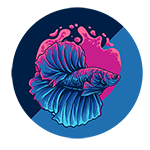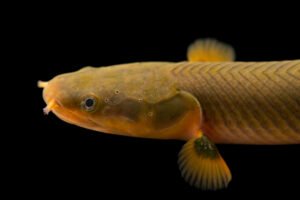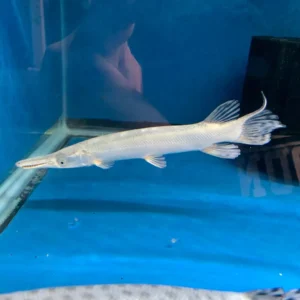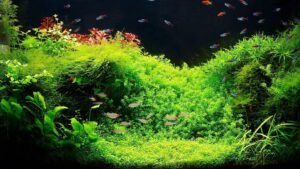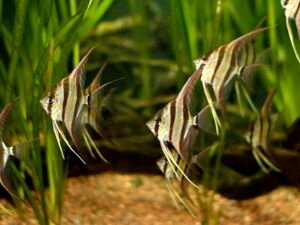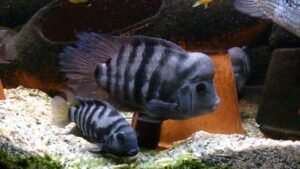Six-Banded Distichodus: Comprehensive Care Guide, Facts, and Habitat
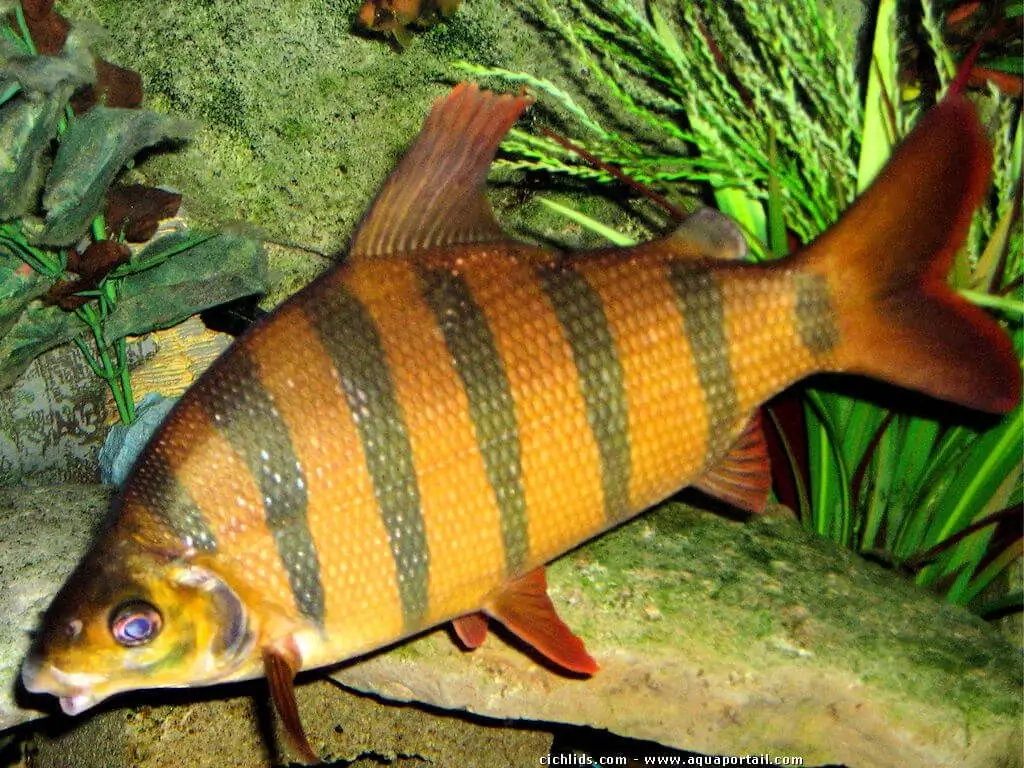
Six-Banded Distichodus: Comprehensive Care Guide, Facts, and Habitat
Discover the Striking Six-Banded Distichodus: A Complete Care Guide and Essential Facts
Introduction
The Six-Banded Distichodus (Distichodus sexfasciatus) is a striking and active freshwater fish known for its vibrant coloration and distinct banding. Native to the rivers and lakes of Central and West Africa, these fish are popular among aquarists for their dynamic behavior and bold appearance. Understanding the natural habitat, dietary needs, and care requirements of the Six-Banded Distichodus is crucial for providing optimal conditions in captivity and ensuring their well-being.
These fish are characterized by their elongated bodies, bright orange-red coloration, and six vertical black bands that run along their sides. They are active swimmers and require a spacious tank with plenty of swimming room. Maintaining the right water parameters, such as a pH of 6.5-7.5 and a temperature of 75-82°F, is essential. Regular water changes and efficient filtration are crucial to keeping the water quality high. Feeding these fish a varied diet helps keep them healthy and vibrant.

Facts
| Fact | Detail |
|---|---|
| Scientific Name | Distichodus sexfasciatus |
| Common Names | Six-Banded Distichodus |
| Year Discovered | 1867 |
| Kingdom | Animalia |
| Phylum | Chordata |
| Class | Actinopterygii |
| Order | Characiformes |
| Family | Distichodontidae |
| Genus | Distichodus |
| Species | D. sexfasciatus |
| Max Size | Up to 15 inches |
| Temperament | Semi-aggressive |
| Aquarium Level | Mid to Bottom Level |
| Difficulty | Moderate to Advanced |
| Shoaling | Solitary or Small Groups |
| Best Kept As | Single specimen or Small Groups |
| Diet and Feeding | Omnivorous |
| Reproduction | Egg layers |
| Average Lifespan | 10-12 years |
Appearance
The Six-Banded Distichodus is easily recognizable by its elongated, bright orange-red body adorned with six vertical black bands. Their vibrant coloration and active swimming make them a visually stunning addition to any large aquarium.

Distribution
Six-Banded Distichodus are native to the freshwater rivers, lakes, and floodplains of Central and West Africa, including the Congo River Basin. They inhabit slow-moving waters with plenty of vegetation and submerged structures.
Habits and Lifestyle
Six-Banded Distichodus are active swimmers and spend most of their time exploring the middle and bottom levels of their habitat. They are generally semi-aggressive and can be territorial, especially during feeding times. These fish are best kept in spacious tanks with ample swimming room and hiding spots.
Care Guide
Tank Setup: A tank of at least 100 gallons is recommended, with a sandy or fine gravel substrate and plenty of plants, rocks, and driftwood to provide hiding spots and territories.
Water Parameters: Maintain a pH of 6.5-7.5 and a temperature of 75-82°F. Efficient filtration and regular water changes are crucial for maintaining high water quality.
Diet: Feed a varied diet that includes high-quality flake or pellet foods, as well as live or frozen foods like brine shrimp, bloodworms, and vegetables such as spinach and zucchini.
Physical Characteristics
Six-Banded Distichodus can grow up to 15 inches in length. They have an elongated, laterally compressed body with vibrant orange-red coloration and six distinct black bands running vertically along their sides.
Diet and Nutrition
These fish are omnivorous and thrive on a varied diet that includes high-quality flake or pellet foods, live or frozen foods like brine shrimp and bloodworms, and fresh vegetables such as spinach, zucchini, and peas.
Breeding and Business
Breeding Six-Banded Distichodus in captivity is challenging due to their specific environmental requirements and the need for precise water conditions. They are egg layers and require a separate breeding tank with optimal conditions.
Breeding Techniques: To breed Six-Banded Distichodus, set up a breeding tank with plenty of hiding spots and a soft substrate. The water should be clean and stable with a temperature around 80°F. After spawning, the eggs should be carefully monitored, and the fry fed small live foods.
Health and Diseases
Six-Banded Distichodus are generally hardy but can be susceptible to common freshwater diseases such as ich, bacterial infections, and parasites. Maintaining high water quality and a proper diet can help prevent these issues. Regular health checks and quarantine of new fish can also mitigate disease risks.

Common Diseases:
- Ich: Symptoms include white spots on the body and fins. Treat with elevated water temperatures and ich-specific medication.
- Bacterial Infections: Look for redness, ulcers, or fin rot. Antibiotic treatments in a quarantine tank are usually effective.
- Parasites: Symptoms include scratching against objects and rapid breathing. Anti-parasitic medications can help.
Commercial Medicines: Some commonly used medications for treating diseases in Six-Banded Distichodus include:
- Ich Treatment: Malachite Green, Formalin
- Bacterial Infections: Maracyn, Kanamycin
- Parasites: Praziquantel, Metronidazole
Behavior
Six-Banded Distichodus are generally semi-aggressive and may be territorial with other fish, especially during feeding times. They are best kept in spacious aquariums with plenty of swimming room and hiding spots. They exhibit interesting behaviors such as exploring their environment and interacting with other tank mates.
FAQs
| Question | Answer |
|---|---|
| How big do Six-Banded Distichodus get? | They can grow up to 15 inches in length. |
| What do they eat? | Their diet should consist of a variety of foods, including high-quality flakes, pellets, live or frozen foods, and fresh vegetables. |
| Can they live with other fish? | They can be kept with other semi-aggressive or similarly sized fish but may be territorial. |
| How do you breed Six-Banded Distichodus? | Breeding is challenging and requires a separate breeding tank with optimal water conditions. They are egg layers and need a suitable spawning environment. |
| What is the ideal tank setup? | A large tank with a sandy or fine gravel substrate, plenty of plants, rocks, and driftwood, a pH of 6.5-7.5, and a temperature of 75-82°F. |
Related Fish or Tank Mates
Suitable tank mates include other semi-aggressive or similarly sized fish such as certain cichlids, catfish, and larger tetras. Avoid keeping them with smaller, more passive fish that may be bullied or eaten.
Price Table
| Region | Price (USD) | Date |
|---|---|---|
| North America | $30-$60 | June 2024 |
| Europe | €25-€50 | June 2024 |
| Asia | $20-$40 | June 2024 |
| Australia | AUD 40-70 | June 2024 |
Factors Affecting Price
- Rarity and demand
- Size and age of the fish
- Breeding and rearing conditions
- Transportation and import costs

References
Categories: Freshwater Fish, Tropical Fish, Aquarium Fish, African Fish, Semi-Aggressive Fish, Bottom Dwellers
Views: 5
